With the success of the Dayton Arcade redevelopment and phase two well underway, the project partners have turned their attention to a prominent building across the street, the Centre City Building.
Model Group and Cross Street Partners plan to buy the massive downtown structure and the project has already been awarded $5 million in state historic preservation tax credits, with other funding sources in progress that would help make the new redevelopment a reality.
The Arcade, of course, is a multi-building complex that covers nearly a complete city block from Ludlow to Main Streets and from Third to Fourth.
But it’s less obvious that the Centre City is itself a combination of at least 4 buildings constructed at different times, one of which incorporated two earlier manufacturing buildings.
This is because multiple remodeling efforts have aimed to give the whole complex a uniform look. But if you look closely, you can see some differences.
As I recount in my article on the history of the Centre City/UBB, the United Brethren Publishing Company had grown significantly as a publisher of mainly religious books and periodicals in the 19th century and sought to build an office tower that would house additional tenants with the profits flowing to retired ministers and their families.
The original United Brethren office building consists of the five right bays when looking at the facade from Main Street. This building is fourteen stories high and was the tallest in Dayton when completed in 1904. It is steel skeleton construction (the 1,000 ton steel frame came from the American Bridge Company in Pittsburgh) and fireproofed with hollow tile.
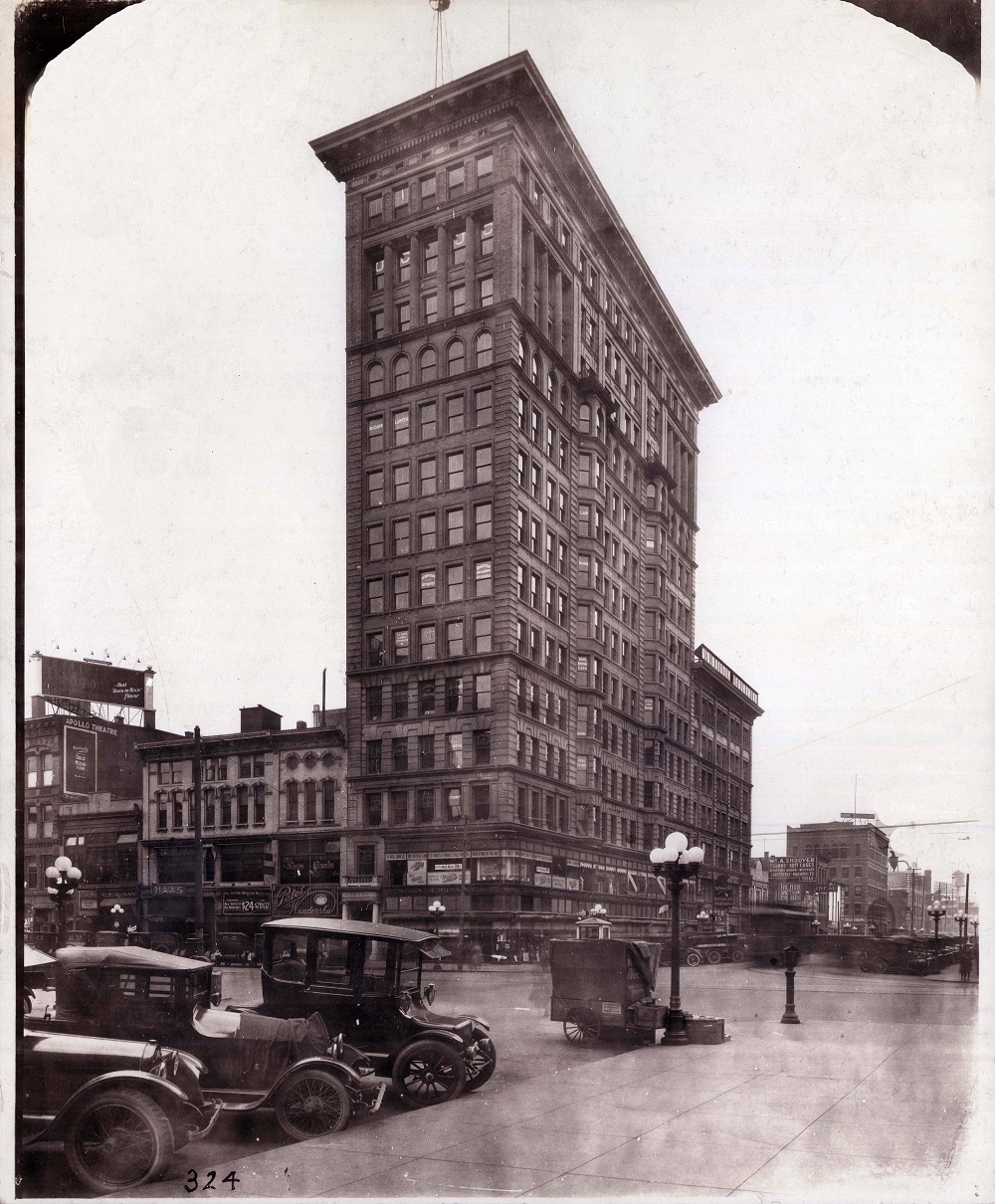
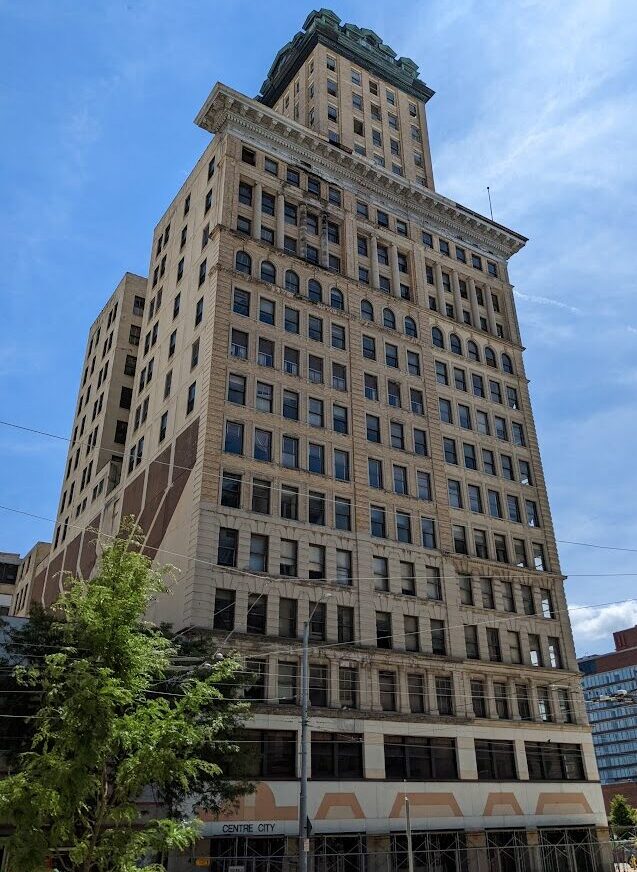
The Fourth Street Manufacturing building can be seen immediately to the east of the office building from Fourth. It “is the result of the extensive remodeling of two late 19th century manufacturing buildings into a seven-story building in 1903-04.”
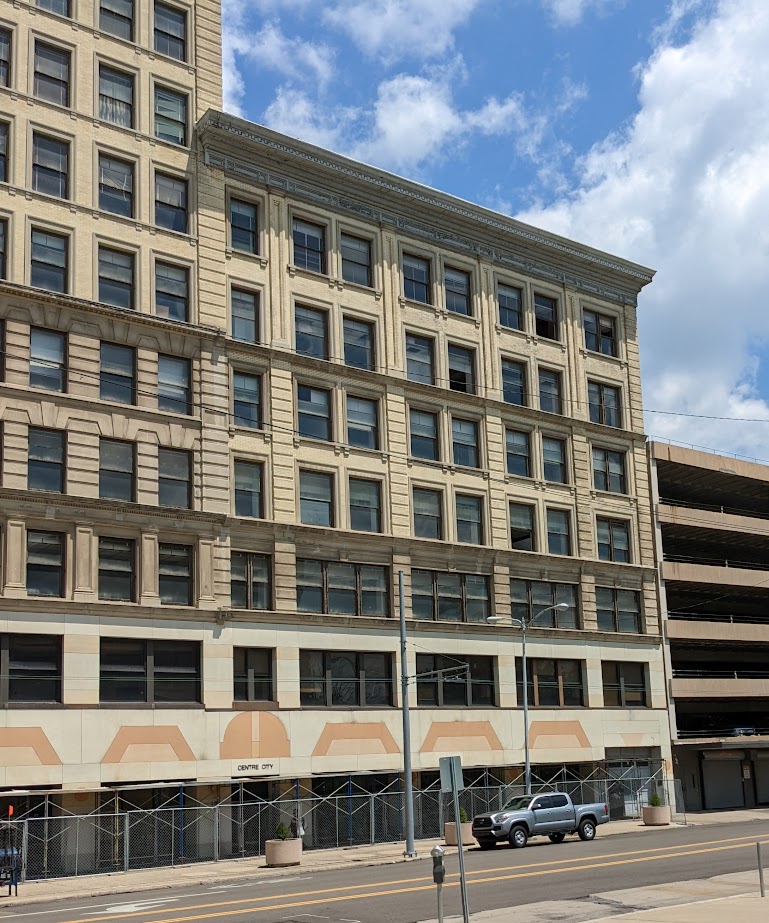
The Market Street Building was a manufacturing building extension built in 1909 and attached to the rest of the complex. Today it’s the most clearly distinct one compared to the rest of the complex and it can be seen from Main Street or the bus hub.
It is two bays wide and seven stories tall with a commercial storefront on the ground floor.
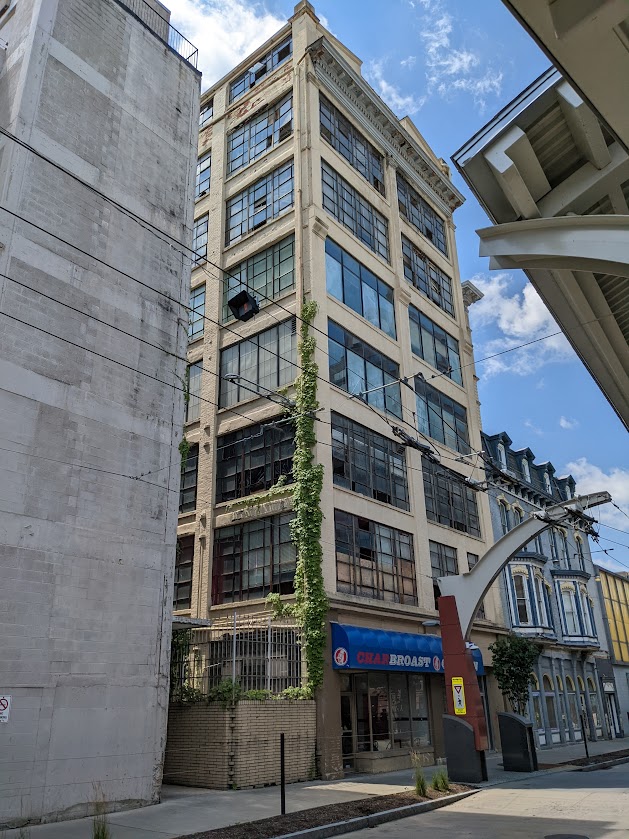
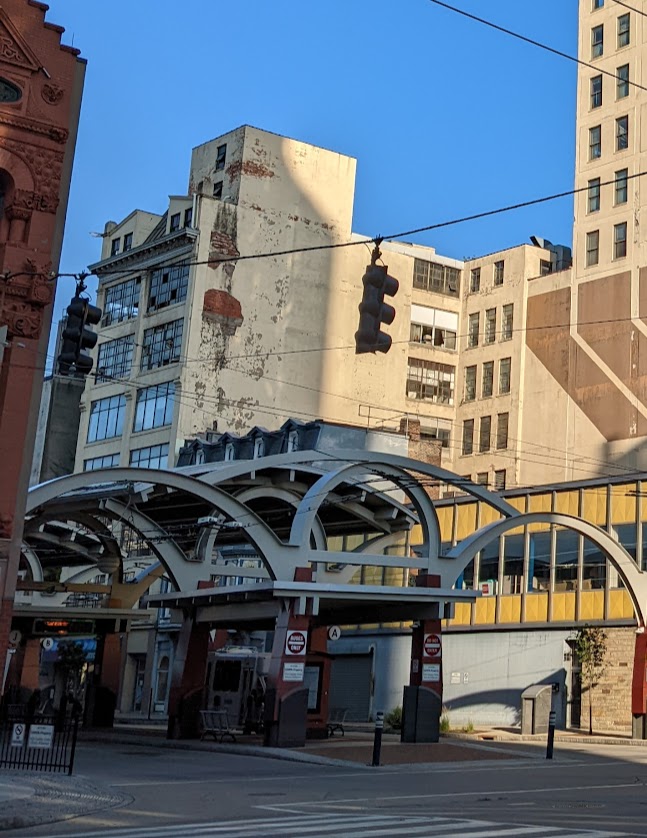
Interestingly, the United Brethren press would move all their manufacturing operations to a new site on the west side of downtown (today Sinclair College’s Building 13) just six years later in 1915.
This was due to the fact that the value of downtown Dayton real estate was skyrocketing as the city grew, which led to the “concentration of business and retail at the heart of the center city” with industrial and residential largely relocating elsewhere.
In the early 1920s the United Brethren began a work on another major addition to their building complex which would greatly expand the available office space.
This addition was built in 1923-24 and added eight new bays to the north of the office building and a five-story tower. The architect was F. S. Hughes and S. J. Branson and G. S. Bergendahl served as engineers.
At least one source has said it was the tallest reinforced concrete building in the world upon its completion.
The first and second floors were altered many times over the years by different commercial tenants, “resulting in a mishmash of mid-twentieth century facades.”
This led to another remodeling in 1984 in which the commercial façade was “refaced with concrete stucco which was tinted in three neutral shades to blend with the upper stories.”
Renovating this sprawling complex certainly won’t be easy, but neither was the Arcade and just look at it now.
Additional Sources
United Brethren Publishing House. National Register of Historic Places Registration Form. 1993
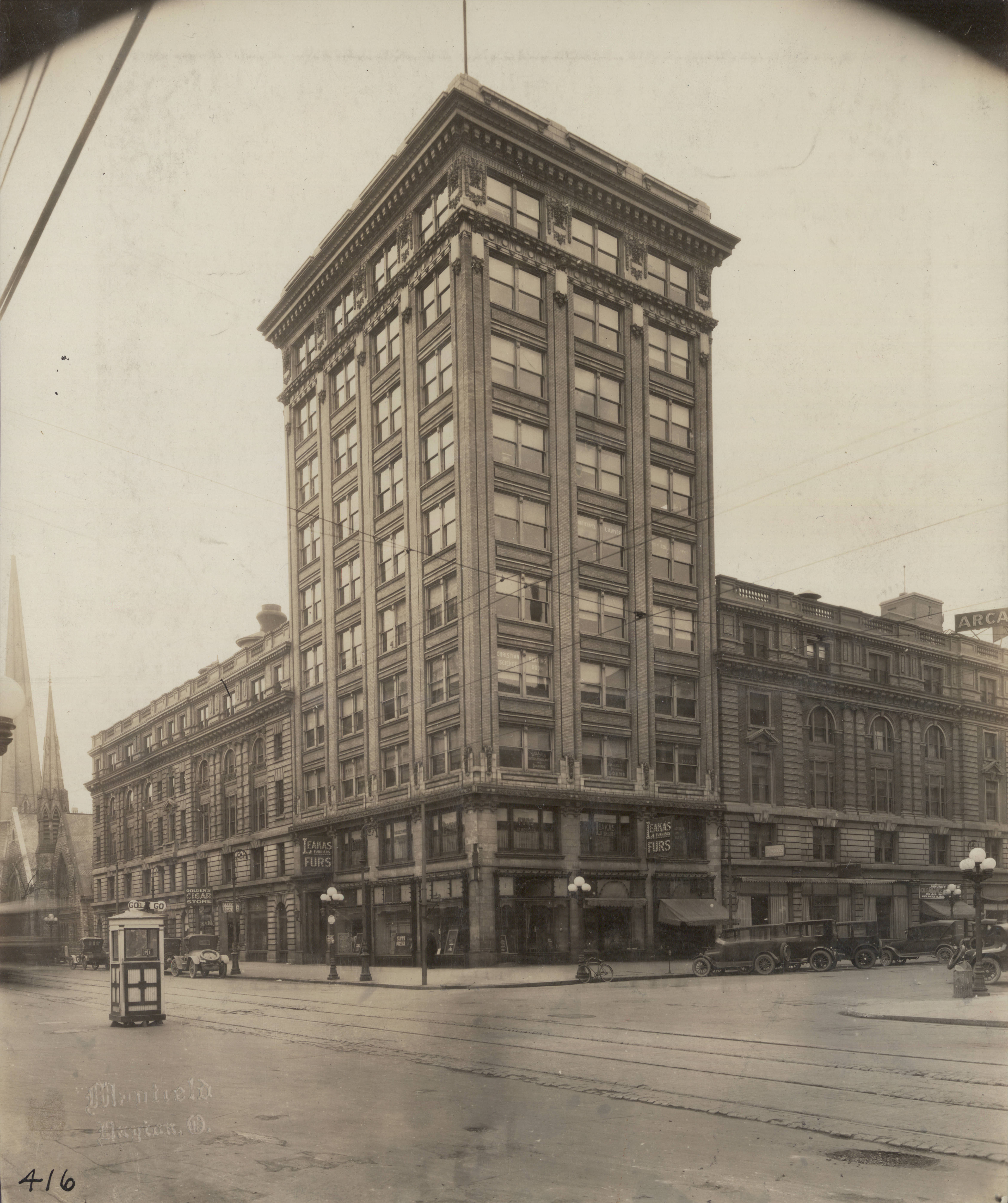
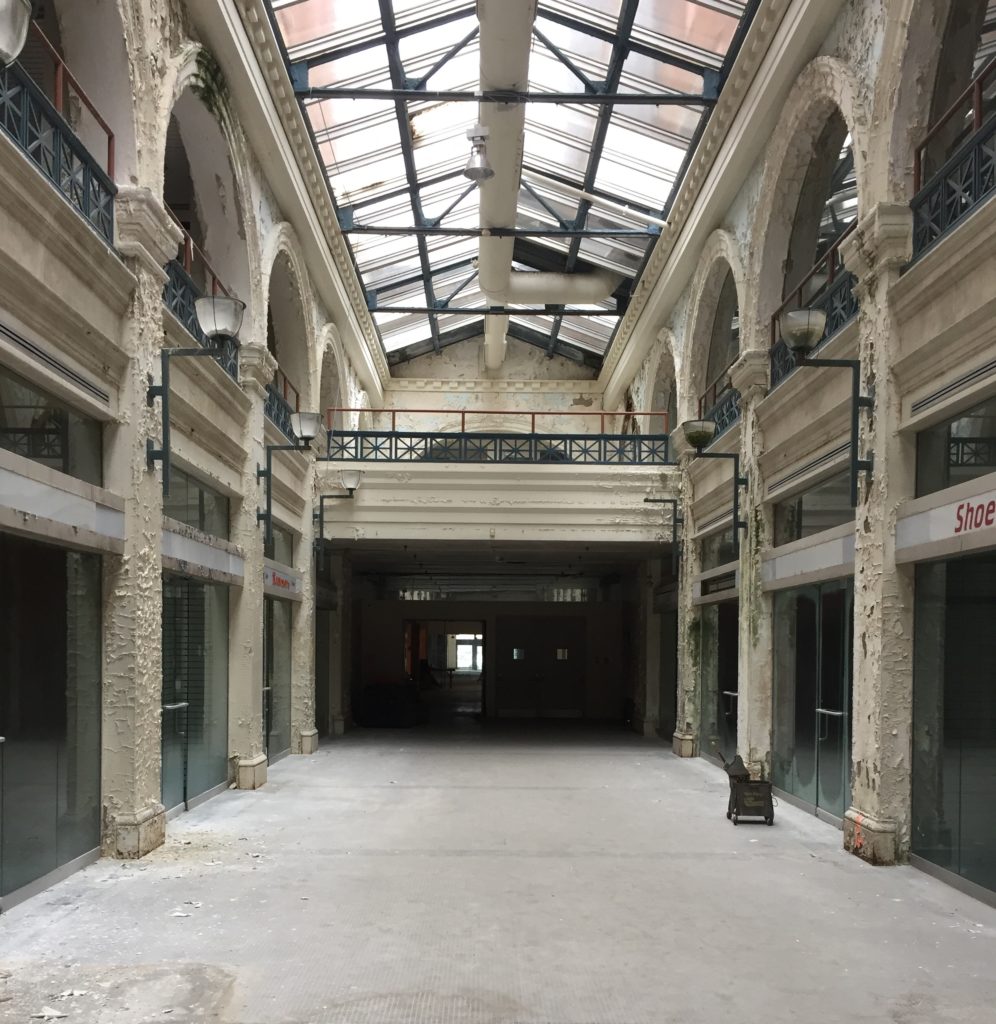
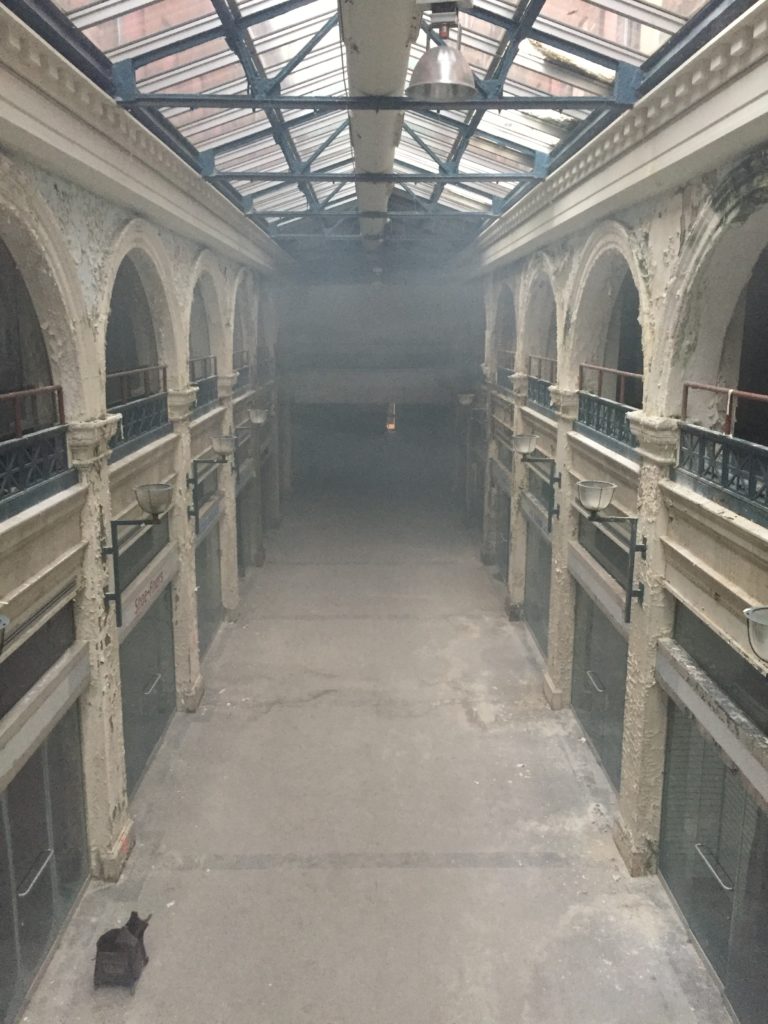
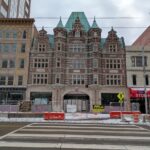
Leave a Reply